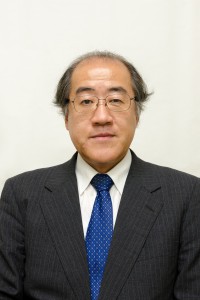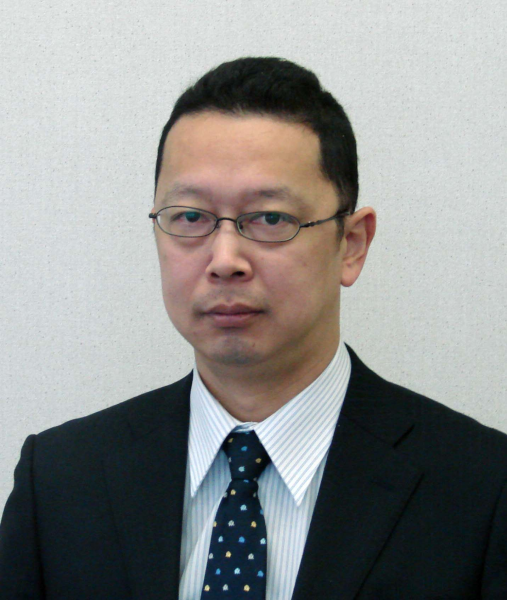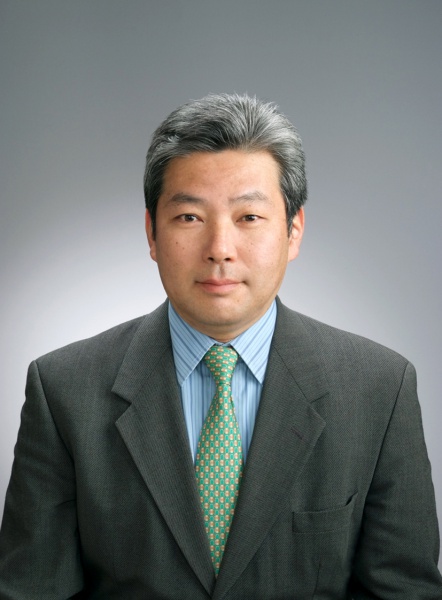Conditions for Wage Increases:Conditions for Wage Increases: Productivity improvement alone is not enoughNeed to keep the country’s manufacturing business cluster inside the country and to restrain trading losses
< Key Points >
- * Real wage rate after 2000 has been stagnant
- * Biggest factor is declining terms of trade
- * No room to boost labor share to any significant degree

FUKAO Kyoji, Professor at Hitotsubashi University
Prime Minister Abe Shinzo and his administration are actively encouraging businesses to raise wages. But are wage increases really possible, judging from the productivity trends? And, if so, then what are the necessary conditions?
A nation’s labor productivity is measured by the real gross domestic product (GDP) generated per hour of labor. Of the real GDP per hour of labor (e.g. 5,000 yen per hour), the real labor cost per hour (e.g. 3,000 yen per hour) is distributed to labor. Therefore, in simplified terms, if the rate of increase in real wages exceeds that in labor productivity, labor share (60% in this example) should increase.
If labor share continues to grow, return on capital will fall and capital investment will decrease. Thus, such a wage increase is unsustainable. This is the key reason why we should look at the current state of labor productivity, in order to assess the impact of wage increases.
♦ ♦ ♦
In the table below, the top two rows show the changes in the nation’s total labor cost (wages directly paid by companies to workers plus other payments such as social insurance contributions for workers) per hour divided by the corresponding consumer price levels—hereinafter, “real wage rate”—and labor productivity (real GDP divided by total labor hours) in roughly 10-year intervals between 1970 and 2011.
| 1970-1980 | 1980-1990 | 1990-2000 | 2000-2011 | |
|---|---|---|---|---|
| Rises in the real wage rate (real labor cost per hour / consumer price) |
59.2% | 23.8% | 16.8% | 0.4% |
| Rise in labor productivity | 51.3% | 45.4% | 20.8% | 16.4% |
| Rise in GDP deflator / consumer price | -12.5% | -4.4% | -5.7% | -11.5% |
| Changes in labor share (based on GDP) | 19.4% | -9.5% | 3.1% | -2.9% |
The table is based primarily on the Japan Industrial Productivity (JIP) Database 2012 (RIETI, HitotsubashiUniversity) and the government’s consumer price statistics. The labor cost and labor hour figures include labor rewards paid to self-employed workers and labor hours of self-employed workers and their family members who contribute to labor input.
Japan’s labor productivity grew by about 50% in 1970-1980 and 1980-1990, but only by about 20% in each of the 10-year periods since 1990, which falls into the period often referred to as the “lost two decades.” On the other hand, if we look at the extent to which growth in labor productivity led to rises in the real wage rate, there are significant differences from period to period.
While in the 1970s and 1990s, increases in labor productivity led to commensurate rises in the real wage rate, the 1980s and the post-2000 period saw much smaller rises in the real wage rate relative to the rise in labor productivity. In particular, the post-2000 period has seen an unusual situation in which the real wage rate rose only slightly even though labor productivity improved by 16%.
♦ ♦ ♦
To better understand this remarkably slow response in real wages after 2000, let us consider the relationship between labor productivity, the real wage rate, and labor’s share of income in rigorous terms.
If we define labor share as the ratio of total labor cost (including self-employed workers’ labor income) to nominal GDP at factor cost (sum total of “compensation of employees,” “operating surplus or mixed income,” and “consumption of fixed capital”), we can express the relationships in the following approximate equation:
Total labor cost / Nominal GDP at factor cost = (Labor cost per hour / Consumer price) × (Consumer price / GDP deflator) ÷ (Real GDP / Total working hours)
The GDP deflator here is obtained by dividing nominal GDP by real GDP, and this is considered to show roughly the price change in goods and services produced in Japan. If we multiply both the right and left side of the equation by GDP deflator / consumer price and labor productivity, it becomes clear that a rise in the real wage rate is broadly equal to the sum total of a rise in labor productivity, a rise in GDP deflator / consumer price, and a rise in labor share. Thus, the rises in the real wage rate in the top row of the table are roughly equal to the total of the corresponding three items below.
We can learn from the table that the main factor behind the slow growth of real wages is a drop in the GDP deflator / consumer price, with additional contribution from a fall in labor share. While the GDP deflator reflects the price of total goods and services (including those exported) produced in the country, consumer price covers only those consumed domestically and also reflects price rises in imported goods and services.
We need further analysis, but as the White Paper on the Labour Economy 2013 pointed out, the drop in the GDP deflator / consumer price reflects, to a significant degree, a deterioration of Japan’s terms of trade (relative prices of export goods and services to prices of imported goods and services).
Just as in the 1970s, during which two oil crises occurred, Japan suffered trading losses from 2000 due to the drop in export prices relative to import prices. This wiped out much of the 16% rise in labor productivity and suppressed rises in the real wage rate.
It is important to note that the drop in labor share—another factor limiting the growth of the real wage rate—was mainly due to a rise in the “consumption of fixed capital (depreciation expenses)” in the nominal GDP in the denominator on the right side of the equation. “Consumption of fixed capital” increased as a result of factors such as the accumulation of capital stock, especially in non-manufacturing sectors, via capital expenditures and growth in the share of capital items that lose value relatively fast, such as information and communication equipment.
If we assume the distribution to capital is net “operating surplus” alone (excluding “consumption of fixed capital”) and measure the labor share as total labor cost / (“compensation of employees” + “operating surplus or mixed income”), we can see that labor share dropped by only 0.5% between 2000 and 2011.
Some large corporations are gaining significant profits and accumulating internal reserves, thus they may be able to increase wages and raise labor share. However, the aggregate return on capital of Japanese companies as a whole is in the doldrums, and it seems that there is no room to boost labor share to any significant degree.
♦ ♦ ♦
As we can see from the above discussion, raising real wages requires not only boosting labor productivity but also slowing the deterioration of the terms of trade. For an industrial country like Japan, which imports primary products and exports sophisticated machinery and materials for which technological advancement is fast, it may be inevitable for the relative prices of exports to drop as technology advances, resulting in a degree of deterioration in terms of trade. For example, in Germany, GDP deflator / consumer price fell by 6.8% between 2000 and 2010. However, the 11.5% fall for Japan in 2000-2010 seems too large.
Factors that drive terms of trade in the long run are the relative supply and demand of goods and services that Japan exports and those that it imports. In order to halt deterioration of the terms of trade, it is important for Japan to improve its negotiating position for procurement of raw materials and fuel overseas and restrain shifting production overseas. For that, it is indispensable for the country to facilitate the exports of goods and services through the Trans-Pacific Partnership (TPP) and enhance the advantage for companies operating within the country by cutting corporate taxes. Shifting production overseas tends to worsen Japan’s terms of trade, as industrial products with quality rivaling that of domestic products are manufactured overseas in huge quantities.
According to empirical analysis using firm-level data, including mine, shifting production overseas can boost the profits of companies and doesn’t necessarily lead to a reduction in domestic employment. However, as companies shift their production overseas, demand for domestic procurement decreases, leading to a decline in employment at their existing business partners. If we consider this and factors such as potential technology leakage, such a shift negatively affects the labor of the nation and companies.
Shifting production overseas can be thought of as cross-border transfer of production factors such as technological know-how held by Japanese companies. According to standard international economic theories, shifting production overseas benefits the owners of relevant production factors or business resources (i.e., mainly shareholders and, in the case of large corporations, including a large number of foreign investors). On the other hand, it negatively impacts the holders of production factors that are difficult to relocate (i.e., labor and land).
The Ministry of Economy, Trade and Industry has set a goal of increasing the number of companies operating overseas by 10,000 through support to small and medium-sized enterprises as part of its policy focus for FY2014. However, such policy may speed up shifting production overseas.
In today’s globalized world, Japan’s position in Asia seems similar to that of Osaka and Aichi prefectures within Japan. Think about this: What if the Osaka and Aichi prefectural governments encouraged companies in their respective prefectures to shift production outside? Who would call it a sane policy? The United States and France are currently reshoring their manufacturing sector. It would be puzzling indeed if the Japanese government does not understand the importance of keeping the country’s manufacturing business cluster inside the country.
Source: “Chingin Josho no Joken [part 2]: Seisanseikojo nomidewa Konnan (Conditions for Wage Increases: Conditions for Wage Increases: Productivity improvement alone is not enough),” Nihon Keizai Shimbun, p. 36 November 1, 2013 (Courtesy of Nihon Keizai Shimbunsha) [November 2013]
Research Institute of Economy, Trade and Industry (RIETI)* translation. Lead and key points added with permission, to reflect the original presentation, by Discuss Japan.
*RIETI : http://www.rieti.go.jp/en/index.html




